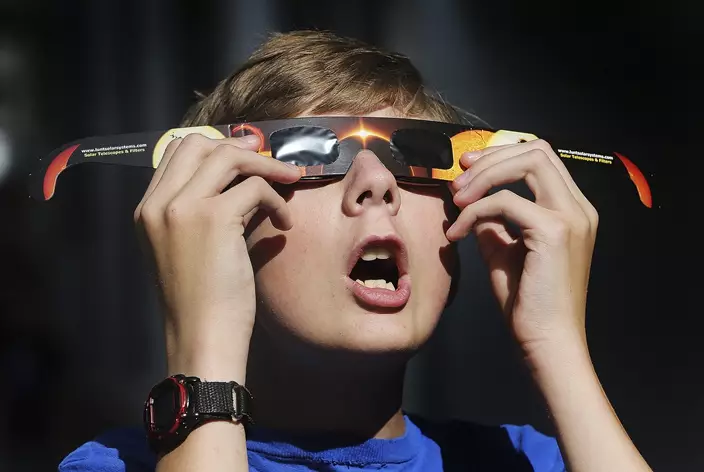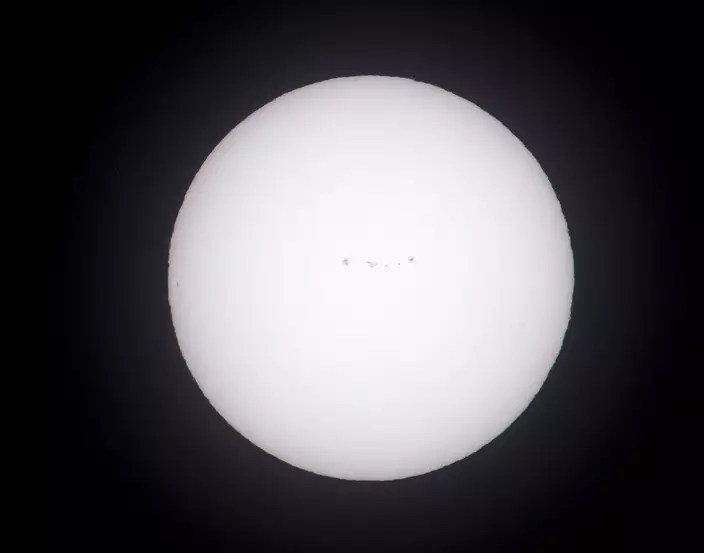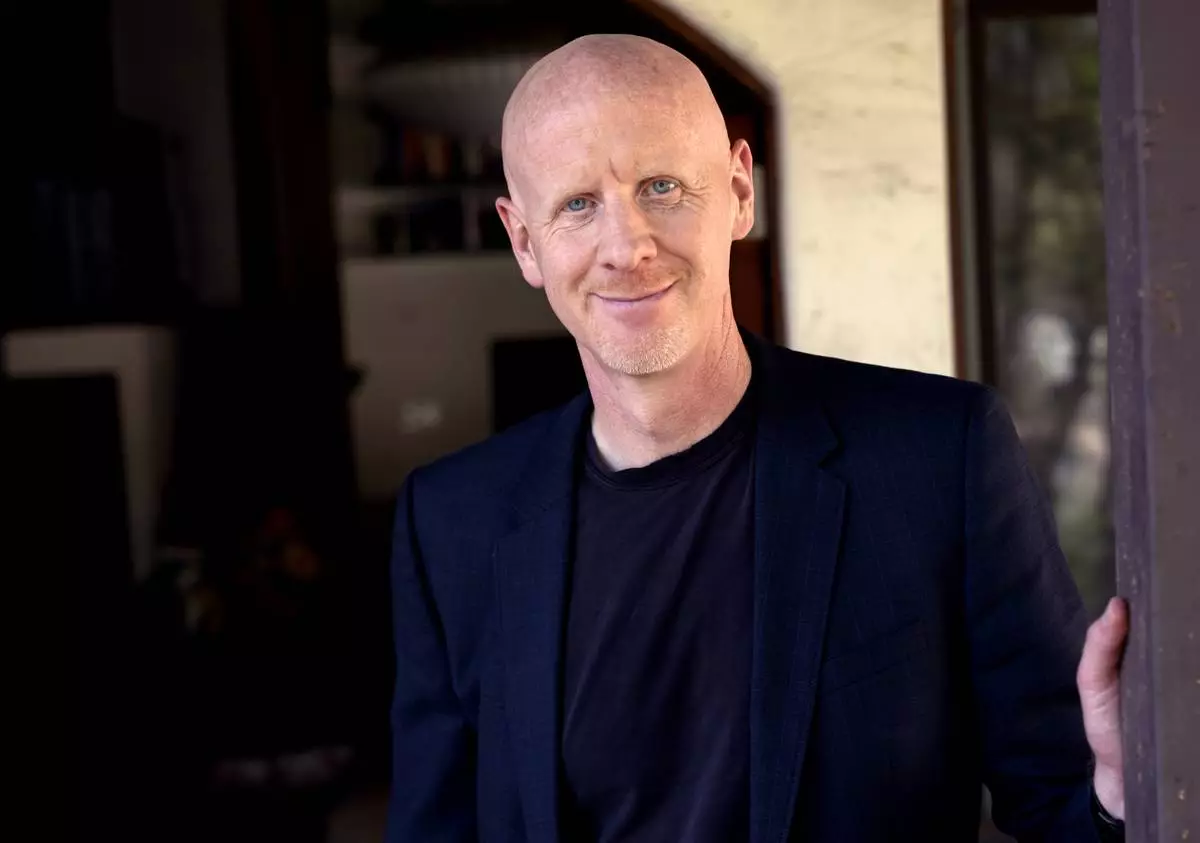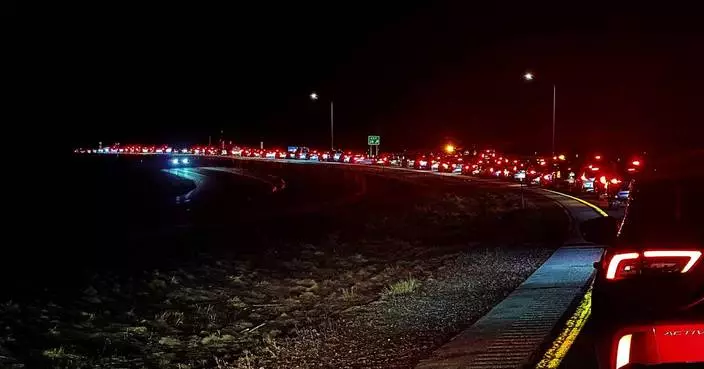Americans with telescopes, cameras and protective glasses staked out viewing spots along a narrow corridor from Oregon to South Carolina to watch the moon blot out the midday sun Monday in what promised to be the most observed and photographed eclipse in history.

FILE - In this Wednesday, Aug. 16, 2017 photo, Colton Hammer tries out his new eclipse glasses he just bought from the Clark Planetarium in Salt Lake City in preparation for the Aug. 21 eclipse. (Scott G Winterton/The Deseret News via AP)
Eclipse-watchers everywhere — and millions were expected to peer at the sun — fretted about the weather and hoped for clear skies for the first total solar eclipse to sweep coast-to-coast across the U.S. in practically a century.
As he set up telescopes, Ray Cooper, a volunteer with the Oregon Museum of Science and Industry in Salem, worried offshore clouds might roll in and spoil the less than two-minute show.
"If it stays like this, it will be perfect," Cooper said on the eve of the big day. He has seen full solar eclipses before, but never so close to home, making this one extra special.

The sun, shown here shot through a white light solar filter, shows a series of sun spots as seen from Salem, Ore., Sunday, Aug. 20, 2017. Salem is in the path of totality for the solar eclipse Monday, Aug. 21. (AP Photo/Don Ryan)
With 200 million people within a day's drive of Monday's path of totality, towns and parks braced for monumental crowds.
In Salem, a field outside the state fairgrounds was transformed into a campground in advance of an eclipse-watching party for 8,500, courtesy of the Oregon Museum of Science and Industry.
"It's one of those 'check the box' kind of things in life," said Hilary O'Hollaren, who drove 30 miles from Portland with her two teenagers and a tent, plus a couple friends.
Astronomers consider a full solar eclipse the grandest of cosmic spectacles.
The Earth, moon and sun line up perfectly every one to three years, briefly turning day into night for a sliver of the planet. But these sights normally are in no man's land, like the vast Pacific or Earth's poles. This will be the first eclipse of the social media era to pass through such a heavily populated area.

Ashley Ann Sander hawks solar eclipse glasses on the side of the road to tourists approaching town for $10 a pair Sunday, Aug. 20, 2017, near Clayton, Ga., a city in the path of totality in North Georgia. (Curtis Compton/Atlanta Journal-Constitution via AP)
In a case of near-perfect celestial symmetry, the sun is 400 times the breadth of our moon and also 400 times farther away, so the two heavenly bodies look more or less the same size from our vantage point, and the moon can neatly cover up the sun.
The moon hasn't thrown this much shade at the U.S. since 1918. That was the country's last coast-to-coast total eclipse.
In fact, the U.S. mainland hasn't seen a total solar eclipse since 1979 — and even then, only five states in the Northwest experienced total darkness.
Monday's total eclipse will cast a shadow that will race through 14 states, entering near Lincoln City, Oregon, at 1:16 p.m. EDT, moving diagonally across the heartland over Casper, Wyoming, Carbondale, Illinois, and Nashville, Tennessee, and then exiting near Charleston, South Carolina, at 2:47 p.m. EDT.
The path will cut 2,600 miles (4,200 kilometers) across the land and will be just 60 to 70 miles (96 kilometers to 113 kilometers) wide. Shawnee National Forest in southern Illinois will see the longest stretch of darkness: 2 minutes and 44 seconds.
Mostly clear skies beckoned along much of the route, according to the National Weather Service.
All of North America will get at least a partial eclipse. Central America and the top of South America will also see the moon cover part of the sun.
NASA and other scientists will be watching and analyzing from telescopes on the ground and in orbit, the International Space Station, airplanes and scores of high-altitude balloons, which will beam back live video. Citizen scientists will monitor animal and plant behavior as daylight turns into twilight and the temperature drops.
NASA's associate administrator for science missions, Thomas Zurbuchen, took to the skies for a dry run Sunday. He planned to usher in the eclipse over the Pacific Coast from a NASA plane.
"Can't wait for the cosmic moment MON morning," he tweeted.
Near Victoria, British Columbia, where 91 percent of the sun will be eclipsed, science and math teacher Clayton Uyeda was going to watch from a ferry along with his wife. He said he was "expecting to have a real sense of connection with the heavens."
He had similarly lofty hopes for his students if they could bring themselves to look up at the sky instead of down at their electronic devices.
Scientists everywhere agree with Uyeda: Put the phones and cameras down and enjoy the greatest natural show on Earth with your own (protected) eyes.
The only time it's safe to look directly without protective eyewear is during totality, when the sun is 100 percent covered. Otherwise, to avoid eye damage, keep the solar specs on or use pinhole projectors that can cast an image of the eclipse into a box.
The next total solar eclipse in the U.S. will be in 2024. The next coast-to-coast one will not be until 2045.










